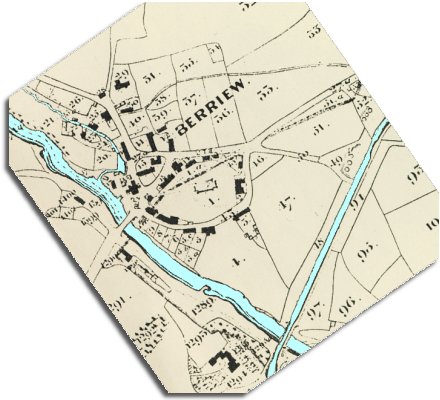The map below is based on a section
of the tithe map for the parish of
Berriew.
It gives us a good idea of the layout of the village in the early years
of Queen Victoria's reign.

TITHE MAPS
In Victorian times almost everyone had to pay tithes to the Church of England. At the beginning of the reign the tithe became a tax on your property. The maps were drawn to see what property everyone had.
